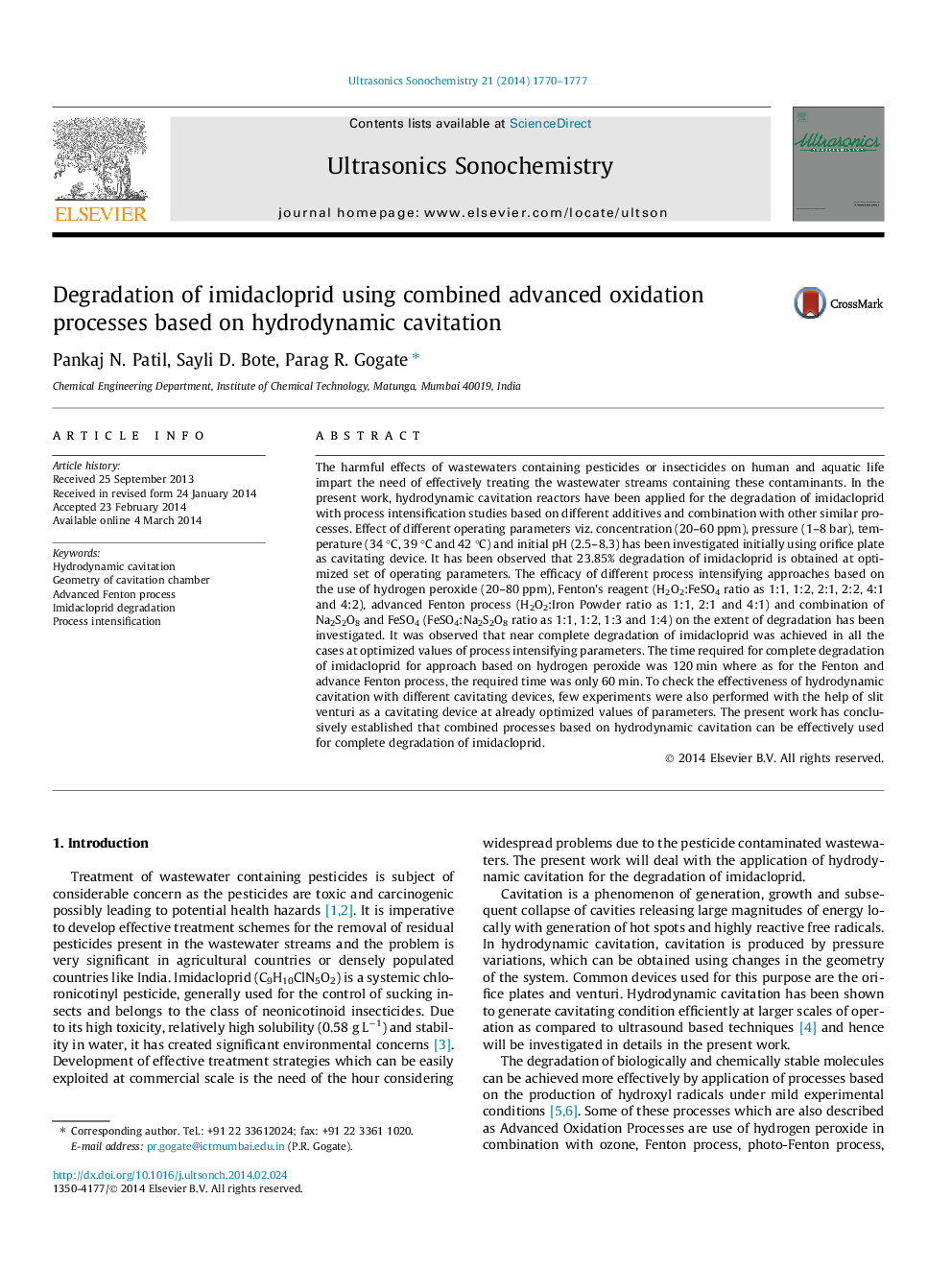| کد مقاله | کد نشریه | سال انتشار | مقاله انگلیسی | نسخه تمام متن |
|---|---|---|---|---|
| 1266103 | 972261 | 2014 | 8 صفحه PDF | دانلود رایگان |
• Hydrodynamic cavitation with Fenton based processes results in complete removal.
• Effect of cavitating device has been established.
• Enhanced extent of degradation in the combined processes also giving synergistic results.
• Effect of important operating parameters such as pressure, temperature and pH has been studied.
The harmful effects of wastewaters containing pesticides or insecticides on human and aquatic life impart the need of effectively treating the wastewater streams containing these contaminants. In the present work, hydrodynamic cavitation reactors have been applied for the degradation of imidacloprid with process intensification studies based on different additives and combination with other similar processes. Effect of different operating parameters viz. concentration (20–60 ppm), pressure (1–8 bar), temperature (34 °C, 39 °C and 42 °C) and initial pH (2.5–8.3) has been investigated initially using orifice plate as cavitating device. It has been observed that 23.85% degradation of imidacloprid is obtained at optimized set of operating parameters. The efficacy of different process intensifying approaches based on the use of hydrogen peroxide (20–80 ppm), Fenton’s reagent (H2O2:FeSO4 ratio as 1:1, 1:2, 2:1, 2:2, 4:1 and 4:2), advanced Fenton process (H2O2:Iron Powder ratio as 1:1, 2:1 and 4:1) and combination of Na2S2O8 and FeSO4 (FeSO4:Na2S2O8 ratio as 1:1, 1:2, 1:3 and 1:4) on the extent of degradation has been investigated. It was observed that near complete degradation of imidacloprid was achieved in all the cases at optimized values of process intensifying parameters. The time required for complete degradation of imidacloprid for approach based on hydrogen peroxide was 120 min where as for the Fenton and advance Fenton process, the required time was only 60 min. To check the effectiveness of hydrodynamic cavitation with different cavitating devices, few experiments were also performed with the help of slit venturi as a cavitating device at already optimized values of parameters. The present work has conclusively established that combined processes based on hydrodynamic cavitation can be effectively used for complete degradation of imidacloprid.
Journal: Ultrasonics Sonochemistry - Volume 21, Issue 5, September 2014, Pages 1770–1777
